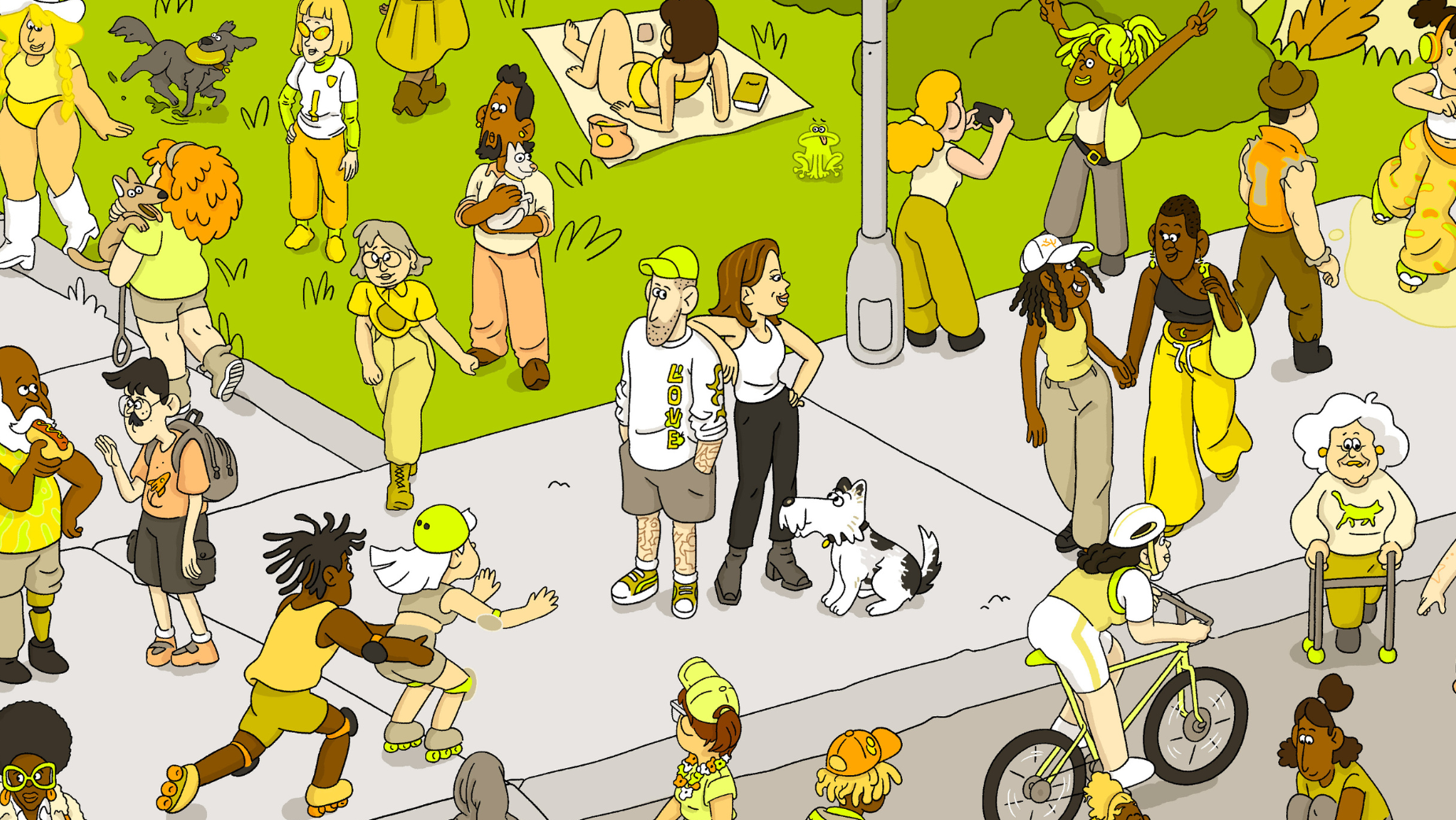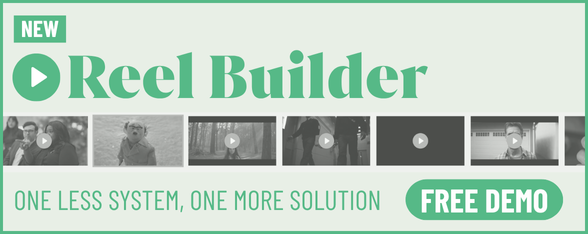
Andy Baker Studio Searches the Human Soul Behind Animation Magic

Andy Baker Studio is an award-winning and globally renowned animation studio, formed in 2018 when director Andy Baker and creative director Lucia Davies joined forces. Now on the roster at Hornet, after over two decades working in the animation and fashion advertising industries respectively, they channel a shared love of traditional animation and combine it with a deep understanding of brands.
Their signature style melds traditional 2D cel animation, modern filmmaking techniques, vivid colour palettes, and in-depth world and character building, deploying them all for exciting brand stories, music videos, short films, TV series and gaming. Together, they’ve applied their distinct style to household names like Marmite, Vans and Nike, artists like NxWorries, and TV shows like Adult Swim’s ‘Rick and Morty’.
Speaking to LBB, the duo shares some of the work they’re proudest of, their approach to character design, and discuss why they will always fight the corner of the craft and artists in the face of AI.
LBB> What elements of a script sets one apart from the other and what sort of scripts get you excited to animate them?
Andy and Lucia> We get most excited by scripts with an original idea that requires world building, and from brands and agencies that are looking to use animation in an adventurous or challenging way within their market. On top of that, if we can work collaboratively with the client and agency to develop a strong narrative then we’re really onto a winner. We feel lucky that most clients now come to us with this approach and allow us to do what we do best.
With Seamless and BBH NYC, we were entirely trusted to create a unique 2D style world filled with characters; based on New York’s boroughs, iconic personalities and hidden 'only in New York' details. They gave us the room for creative exploration and we did a research deep-dive into the city’s rich cultural and comedic history; peppering fun Easter eggs throughout that pay homage to the city and Seamless’ past 20 years of food delivery.
LBB> How do you approach creating a treatment for a spot?
Andy and Lucia> We love to explore different design styles for the spot as this allows us to see which design route best serves the script, and always brings up some interesting questions or ideas that help us evolve the treatment. Working out where the project is going to be viewed, who is going to view it and what you or the brand are trying to sell or create is normally a good way to narrow down what kind of animation style fits. We then get the storyboard ideas into an animatic as soon as possible. For us, this is where the film is really crafted, and being able to explore the pacing and shot structure of the spot combined with sound design at such an early point really helps to sell our ideas and what we are looking to create for the brand.
Take our award-winning series of commercials for Habito: the online mortgage brokers were prepared to take risks in the boring mortgage market and came to us to create a subversive advertising campaign that would break through and appeal to first-time, 25 to 35-year-old buyers who were disillusioned with the seemingly hellish nature of getting a mortgage. Referencing the artwork of Jimbo Phillips (who created Habito’s first print ad campaign) and adult animation cartoons from the likes of JJ Villard, we created our own distinct style and cartoon horror comedy world that forged an ongoing relationship with the brand and Uncommon Agency. Over a four year partnership, we were able to develop a series of ghoulishly fun scripts that visually and audibly dramatised 'Hell or Habito' (and saw a tripling of customer base and leading market presence for the brand).
Above: Marmite - 'The Summer of Love Not Hate'
LBB> How important is it for you to do research and understand the strategic and contextual side of the ad?
Andy and Lucia> We think it’s really important for us to immerse ourselves in the brand through contextual research. We’ll go back over old commercials and campaigns to see what has been done previously so that we can either challenge or reference that in our pitch. Also gaining a wider understanding of the brand and product within the bigger market is key for us and we ask ourselves questions such as: What are the competitors doing? How is this campaign looking to stand out or challenge the status quo? In what way can this animation help speak to those customers?
Exploring these core questions gives us a clearer understanding of where the brand is trying to position themselves and how we can help in that process.
LBB> What do you think are the misconceptions about animation throughout the industry?
Andy and Lucia> That it’s too expensive and it takes way too long. It can definitely be both of those things but if you have a good idea and are willing to be collaborative, and trust the process, it doesn’t need to be.
LBB> From your perspective, what’s the key to animation that really lives?
Andy and Lucia> Personally, we love seeing the hand of the animators and artists and their unique take on a character. Animation has reached such a technical level now that is mind blowing but also leaves us feeling a tiny bit empty (also in awe) so we just naturally gravitate towards the things that are unique and slightly freer - and funny! We think animation will always have that ability to just be silly and funny, and when moving drawings make you properly belly laugh we think that’s really passing the test of being alive.
LBB> How do you approach character design? What is your creative process like?
Andy and Lucia> Normally with character design we’re trying to get a sense from the script of who that character ‘is’ and what they represent within the story. To do this, we list out what we believe their personality traits should be and this really helps once we move into design. We love giving the characters little idiosyncratic personality details and back stories during this part that can then be drawn on when designing or animating.
We also do a ton of research. As well as written notes on character, expressions and poses, we also put together visual references from a wide range of sources (books, films, magazines, real life, photos, first and second hand) and go deep into their style, wardrobe, hair and make-up. These details have such an impact on the story and give real cues to what a character is like even before they move and act in animation - whether this is a pizza slice, a famous personality or a background character in a scene.


Above: Character designs for Tractor Beverage Co.
LBB> We all know of some ever-green adult animations, but lately they have definitely been on the rise, from ‘Rick and Morty’ to ‘Arcane’. What sort of opportunities does this open for animators?
Andy and Lucia> There’s been a definite rise in brands wanting to ‘subvert’ their usual audience by leaning into adult animation in an attempt to cut through what is deemed traditional advertising. We’ve directed two big campaigns (for Habito and Tractor) that wanted this exact thing in the financial and drinks markets. Overall, we think it’s great for the industry as it opens up more opportunities for animators and artists outside of the series format, and hopefully it sees brands becoming braver and more comfortable using animation in industries that might never have used it previously.
Above: Habito - 'The Climb'
LBB> What is your favourite piece of technology or software that you use and how does it help your creative process?
Andy> I still love Flash (Adobe Animate) because it’s what I learnt to use first. I also use 3D as a guide for layouts and backgrounds a lot. Both these programs help me work quickly through ideas to see what is and isn’t working, but I’ll always start in a notebook as I think drawing on paper is still the best way to get ideas down.
Lucia> I have recently started using Milanote. It’s a great online mood board that allows me to succinctly put all my creative research in one place and has really helped me to brief and visually communicate with our character and background design teams. I love being able to see vast amounts of creative visuals in front of me at one time and be able to annotate and include links. I always have tons of open browser windows, tabs and screenshots across all my devices and screens; this has helped organise things in one place.
LBB> What recent projects have really stood out for you and why?
Andy and Lucia> Our project for Tractor Beverages was a great example of being able to completely build a world for a film from scratch. Living in and developing that world was a really collaborative process between our team, the agency and client. It was really cool and quite rare to have all three parties' direct involvement in crafting the story on a day-to-day basis. We really pushed and challenged each other to see where we could create the clearest story for the brand and seeing all that work come together after five months, and the reaction, has been very satisfying.
Above: Tractor Beverage Co. - 'Escape the Ordinary'
LBB> What misconception about you or your work do you most often encounter and why is it wrong?
Andy and Lucia> We see the comment ‘How many drugs did you take to make this?’ a lot. Making animation is definitely a ‘trip’, but mostly a ‘how quickly can you make those changes?’ kind of trip.
LBB> What are your thoughts on opening up the production world to a more diverse pool of talent? Are you open to mentoring and apprenticeships on production?
Andy and Lucia> Animation drastically needs to be made more accessible, both in who it attracts and how they are taught. There is such a shortage of skilled artists who are ‘production ready’ straight out of university, and with those courses coming at such a high cost, entry is prohibitive to all but a few. Any kind of apprenticeships or mentoring on productions seems highly valuable, both to the next generation of artists who are weighing up how they can enter an industry that really needs new voices from all backgrounds, and to companies who can teach production in a more hands-on way. We both like to dedicate our free time to this youth work when we can and have been involved in various programmes, schemes and charities. Among other things, Lucia helped found Hackney Quest New Futures: a programme aimed to provide young people aged 14-25+ with the space and support to gain skills and opportunities that will help them in their employability as they move forward.
Above: Innisfree Cosmetics - 'The Isle of Adventure'
LBB> How do you incorporate future-facing tech into your work?
Andy and Lucia> We're keeping an eye on how we can integrate AI into our productions in an ethical way (i.e. not by scraping the internet and in a way that doesn’t affect crew by taking a job away). Using quick AI image generation when coming up with ideas for scenes has definitely been tried but is still in early stages and only really helpful for research and ideas. We can see other technologies becoming useful in 2D animation production but at the end of the day, will always try and fight the corner of the craft and artists over speeding up production as it’s with human soul that the magic of animation is created.
LBB> Any advice you would like to give to aspiring artists?
Andy and Lucia> Find a way to make the work you want to make and make it! People are out there that want - and need - to see what you’re going to make. And there’s so many avenues to put work out into the world now, which means you can get access to those people way quicker and more directly.















